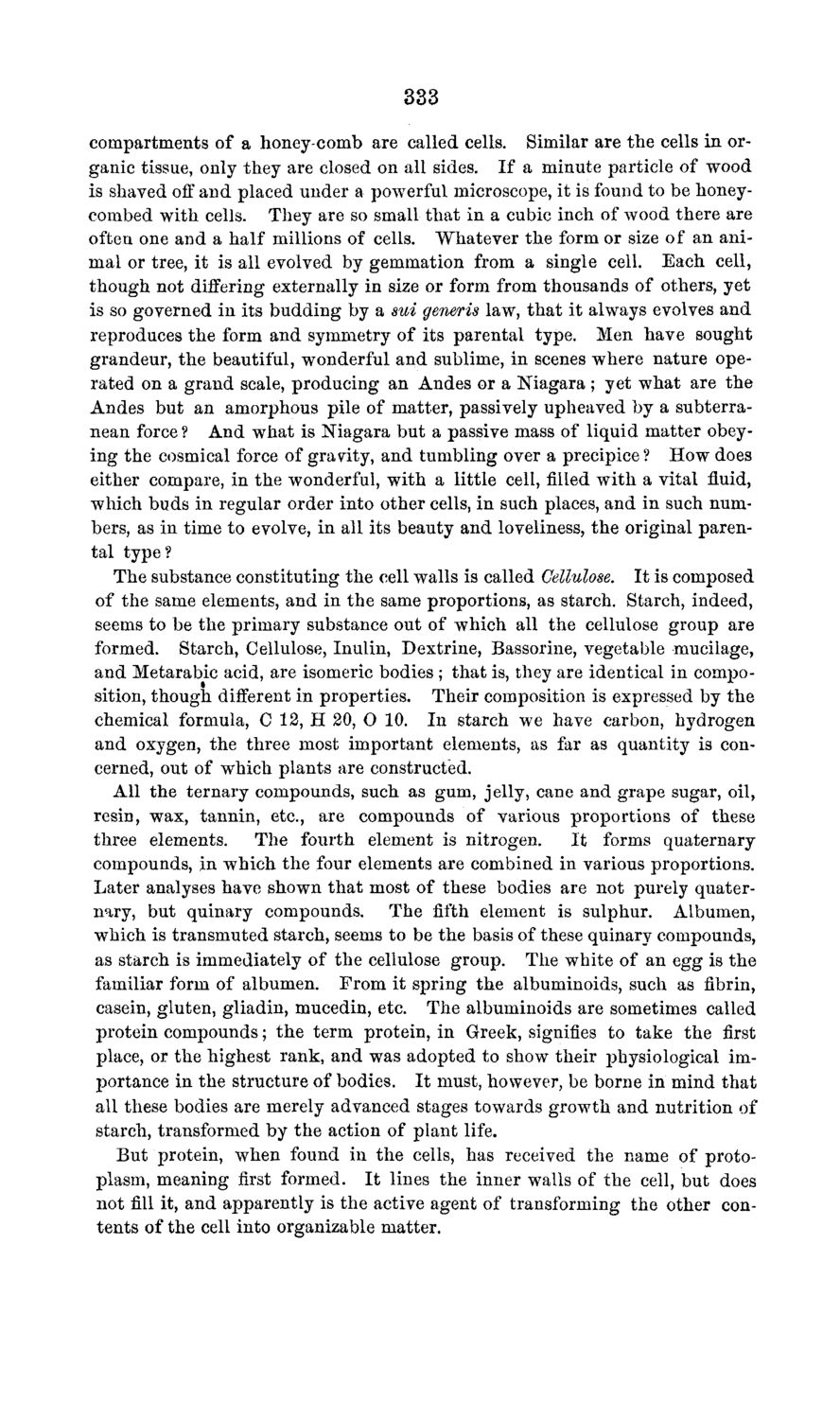| |
| |
Caption: Board of Trustees Minutes - 1869
This is a reduced-resolution page image for fast online browsing.

EXTRACTED TEXT FROM PAGE:
333 compartments of a honey-comb are called cells. Similar are the cells in organic tissue, only they are closed on all sides. If a minute particle of wood is shaved off and placed under a powerful microscope, it is found to be honeycombed with cells. They are so small that in a cubic inch of wood there are often one and a half millions of cells. Whatever the form or size of an animal or tree, it is all evolved by gemmation from a single cell. Each cell, though not differing externally in size or form from thousands of others, yet is so governed in its budding by a sui generis law, that it always evolves and reproduces the form and symmetry of its parental type. Men have sought grandeur, the beautiful, wonderful and sublime, in scenes where nature operated on a grand scale, producing an Andes or a Niagara ; yet what are the Andes but an amorphous pile of matter, passively upheaved by a subterranean force ? And what is Niagara but a passive mass of liquid matter obeying the cosmical force of gravity, and tumbling over a precipice ? How does either compare, in the wonderful, with a little cell, filled with a vital fluid, which buds in regular order into other cells, in such places, and in such numbers, as in time to evolve, in all its beauty and loveliness, the original parental type? The substance constituting the cell walls is called Cellulose. It is composed of the same elements, and in the same proportions, as starch. Starch, indeed, seems to be the primary substance out of which all the cellulose group are formed. Starch, Cellulose, Inulin, Dextrine, Bassorine, vegetable mucilage, and Metarabic acid, are isomeric bodies ; that is, they are identical in composition, though different in properties. Their composition is expressed by the chemical formula, C 12, H 20, O 10. In starch we have carbon, hydrogen and oxygen, the three most important elements, as far as quantity is concerned, out of which plants are constructed. All the ternary compounds, such as gum, jelly, cane and grape sugar, oil, resin, wax, tannin, etc., are compounds of various proportions of these three elements. The fourth element is nitrogen. It forms quaternary compounds, in which the four elements are combined in various proportions. Later analyses have shown that most of these bodies are not purely quaternary, but quinary compounds. The fifth element is sulphur. Albumen, which is transmuted starch, seems to be the basis of these quinary compounds, as starch is immediately of the cellulose group. The white of an egg is the familiar form of albumen. From it spring the albuminoids, such as fibrin, casein, gluten, gliadin, mucedin, etc. The albuminoids are sometimes called protein compounds; the term protein, in Greek, signifies to take the first place, or the highest rank, and was adopted to show their physiological importance in the structure of bodies. It must, however, be borne in mind that all these bodies are merely advanced stages towards growth and nutrition of starch, transformed by the action of plant life. But protein, when found in the cells, has received the name of protoplasm, meaning first formed. It lines the inner walls of the cell, but does not fill it, and apparently is the active agent of transforming the other contents of the cell into organizable matter.
| |